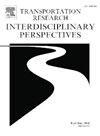为新兴市场城市的各种电动汽车设计最优的快速充电基础设施
IF 3.9
Q2 TRANSPORTATION
Transportation Research Interdisciplinary Perspectives
Pub Date : 2025-05-01
DOI:10.1016/j.trip.2025.101470
引用次数: 0
摘要
本研究强调了纯电动汽车(BEV)在新兴市场脱碳运输系统中的关键作用,重点关注了有限的充电基础设施带来的挑战,这阻碍了纯电动汽车的采用。它提出了一个基于流量的优化模型,该模型结合了多个行驶里程、多周期评估和基于排队模型的充电站容量,以确定人口密集的新兴市场城市(特别是大雅加达地区)的最佳快速充电基础设施。考虑到家庭充电的广泛使用,本研究的重点是满足长途司机的途中充电需求。该模型表明,在保持合理的求解时间的同时,内生积分的纯电动汽车范围变化提供了更详细的站点位置分布。研究结果表明,到2050年,每个快速充电器的最佳比例为218辆纯电动汽车,包括372个配备约62800个充电器的站点。这些站点中有一半以上需要安装100多个充电器,并且主要位于公路走廊沿线。考虑到该地区人口密度高,土地可用性有限,本研究还探讨了盈利能力和土地利用方面的问题,为在具有相似特征的地区规划部署充电基础设施提供战略指导。本文章由计算机程序翻译,如有差异,请以英文原文为准。
Designing optimal fast-charging infrastructure for various electric vehicle ranges in emerging-market city
This study highlights the crucial role of Battery Electric Vehicles (BEVs) in decarbonizing transportation systems in emerging markets, focusing on the challenge posed by limited charging infrastructure, which hampers BEV adoption. It proposes a flow-based optimization model that incorporates multiple driving ranges, multi-period assessment, and capacitated charging stations that based on a queuing model to determine the optimal fast-charging infrastructure for a densely populated emerging-market city, specifically the Greater Jakarta Area. Given a widespread access to home charging, this study focuses on meeting the en-route charging demand of long-distance drivers. The proposed model shows that endogenously integrating variations in BEV ranges provides more detailed distributions of station locations, all while maintaining reasonable solution times. Findings indicate an optimal ratio of 218 BEVs per fast charger by 2050, consisting of 372 sites equipped with approximately 62,800 chargers. Over half of these sites require more than 100 chargers to be installed and are mainly positioned along highway corridors. Given the high population density and limited land availability in the area, this study also explores profitability and land utilization aspects, offering strategic guidance to plan the rollout of charging infrastructure in regions with similar characteristics.
求助全文
通过发布文献求助,成功后即可免费获取论文全文。
去求助
来源期刊

Transportation Research Interdisciplinary Perspectives
Engineering-Automotive Engineering
CiteScore
12.90
自引率
0.00%
发文量
185
审稿时长
22 weeks
 求助内容:
求助内容: 应助结果提醒方式:
应助结果提醒方式:


